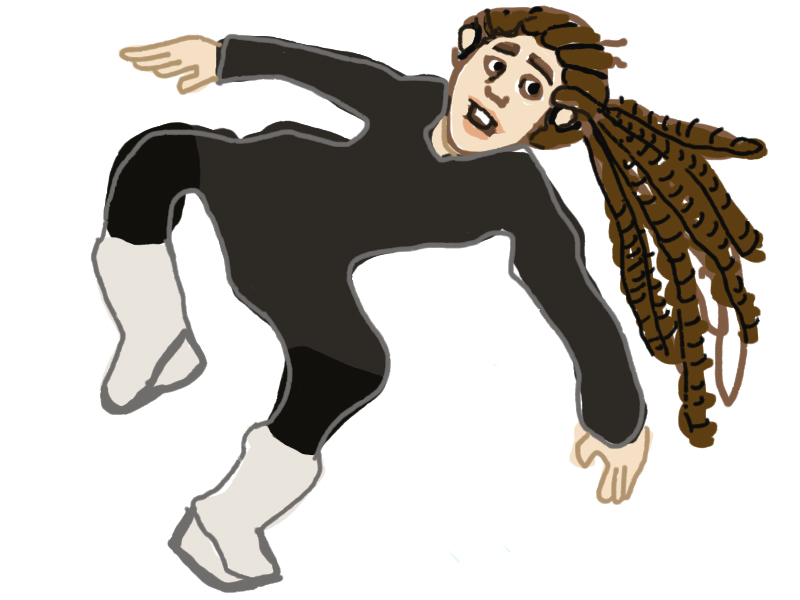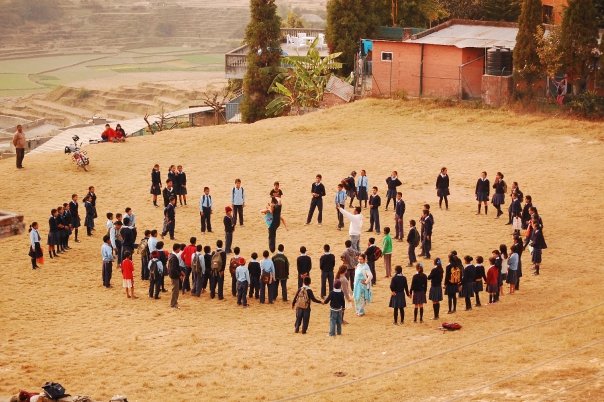This first week was filled with an endless assortment of surprises, fiascos, setbacks, and shockers. My focus before having taught any classes was to create lesson plans with substance in them, and to deliver that raw information effectively. I see now that there is actually an intermediary between those two tasks that dominates the end results entirely; that is, my presence as a teacher in and outside of the classroom.
So far, I have worked with two Media Arts classes. The lesson objectives for both involved motivating students to produce filmed interviews of each other, working in groups. For the most part, the purpose of projects in Media Arts class is to encourage students to practice their filmmaking skills by using camera equipment and editing software. I don’t really have to worry about chronological sequencing of projects, as students have already been introduced to equipment and software, so this project made sense as an introductory activity in the way that I could learn some interesting facts about them.
Right away, I knew it would be a struggle to implement theoretical instruction in this very hands-on class. Initially, my emphasis was on lively content that students could relate to, and I still think that is the way to go – although I realize now that conveyance of content is everything. Particularly, I’ve come to recognize that questioning students is the best, but also the most challenging way to communicate ideas. I have to continue working on posing questions throughout lessons that provoke student interest and discussion. So often with peers at UBC, discussions can be initiated by vague statements or imprecise queries. I learned this week that this is not so with secondary students; they require a succession of simple, explicit questions that can perhaps build into more complicated, abstract concepts. So far, my questioning elicits very little reaction and discussion from students, and it requires a lot of work.
Another difficulty associated with the Media Arts class in particular is students having access to the computers while I am instructing. Normally, they are not required to have monitors off while the teacher is instructing, but I am finding that students are distracted greatly by the presence of the computers while I’m trying to teach. I am starting to realize how my own teaching style may have to diverge from some of the established norms of the Media Arts room. In the upcoming week I would like to implement some new routines during class such as having students power-off the monitors before I instruct, and more strict regulation regarding when they can take out the film equipment (for example, they can only start filming once the group has downloaded all previous footage on the camera onto the computer).
On a positive note, I feel that I have gained a lot of technical knowledge in just this one week. The cameras, the computer software, the projector set-up, and all the related wiring were enormously intimidating before I started teaching, but now they are starting to make sense, and I can set things up quickly.
My goals in the upcoming week include strengthening my questioning capabilities by writing down larger lists of questions in my lesson plans. I would like to ‘toughen up’ my relationship with students in both Media Arts classes by establishing my own classroom routines, how they differ from the procedures they are used to, and why they are important. Finally, I would also like to attempt a new method for learning names. I would like to take attendance throughout the period by speaking to each student individually before the end of class. This method should allow me to connect with students more personally, learn their names more effectively, and aid in the assessment process as well, which relies heavily on personal reflection and student-teacher discussion.

Where the film making magic happens.



